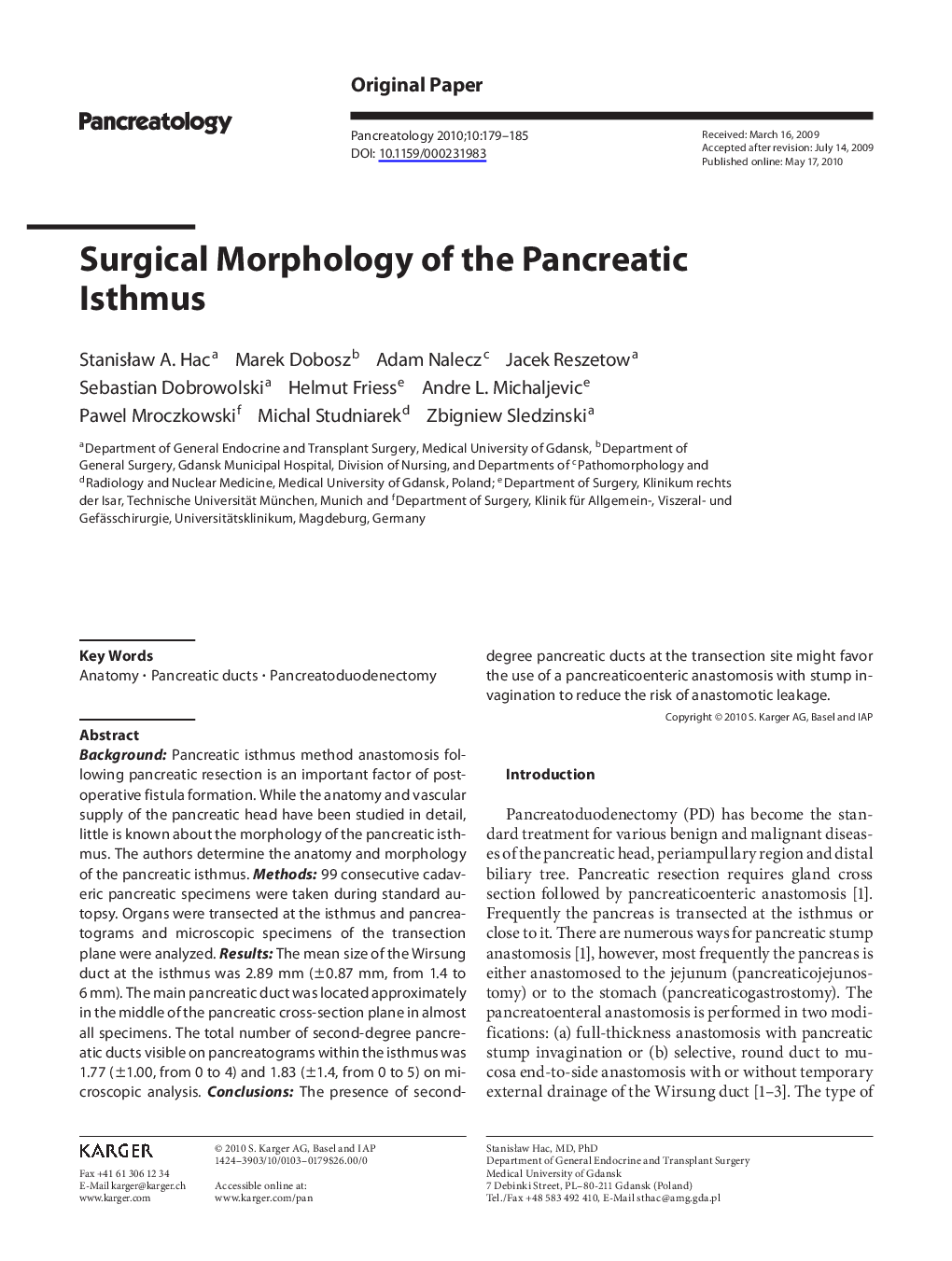| Article ID | Journal | Published Year | Pages | File Type |
|---|---|---|---|---|
| 3318151 | Pancreatology | 2010 | 7 Pages |
Abstract
Background: Pancreatic isthmus method anastomosis following pancreatic resection is an important factor of postoperative fistula formation. While the anatomy and vascular supply of the pancreatic head have been studied in detail, little is known about the morphology of the pancreatic isthmus. The authors determine the anatomy and morphology of the pancreatic isthmus. Methods: 99 consecutive cadaveric pancreatic specimens were taken during standard autopsy. Organs were transected at the isthmus and pancreatograms and microscopic specimens of the transection plane were analyzed. Results: The mean size of the Wirsung duct at the isthmus was 2.89 mm (±0.87 mm, from 1.4 to 6 mm). The main pancreatic duct was located approximately in the middle of the pancreatic cross-section plane in almost all specimens. The total number of second-degree pancreatic ducts visible on pancreatograms within the isthmus was 1.77 (±1.00, from 0 to 4) and 1.83 (±1.4, from 0 to 5) on microscopic analysis. Conclusions: The presence of seconddegree pancreatic ducts at the transection site might favor the use of a pancreaticoenteric anastomosis with stump invagination to reduce the risk of anastomotic leakage.
Related Topics
Health Sciences
Medicine and Dentistry
Gastroenterology
Authors
StanisÅaw A. Hac, Marek Dobosz, Adam Nalecz, Jacek Reszetow, Sebastian Dobrowolski, Helmut Friess, Andre L. Michaljevic, Pawel Mroczkowski, Michal Studniarek, Zbigniew Sledzinski,
